FloridaTreeTrimming.com connects homeowners and business owners with local tree services for trimming, pruning, and tree removal, as well as stump grinding and removal.
Before heading off on a do-it-yourself tree project, it is highly recommended you consult a professional tree service - particularly a certified arborist or licensed landscape architect - to ensure what you'd like to do with your trees is legal.
As of 2019, there has been state-wide deregulation regarding tree care in Florida on private property. However, there still remain some laws, regulations, and exceptions you may not be aware of - such as mangrove protection actions. Contact a local, licensed tree service or your local government website for more information.
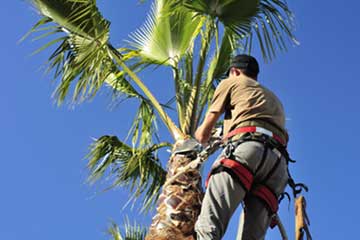
Florida Tree Trimming
Tree trimming and tree pruning are often used interchangeably, but there is a difference. Tree trimming is concerned with the aesthetic of the tree (how it looks) and safety (eliminating risks). Trees growing near power lines are trimmed. Trees with branches growing near pool cages and roofs are trimmed. Tree trimming is performed before hurricanes or severe weather on trees that could be hazardous. Hedges are trimmed.
Tree trimming allows you to control the shape and size of the tree for design purposes. The frequency of tree trimming will depend on your area, the season, the type of tree, and your preferences, but on average is done semi-annually.
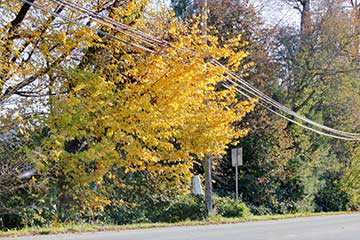
Power Lines!Tree trimming near power lines should never be done by yourself (or anyone). Power companies - FPL, Duke, etc. - take care of this. Check with them first!
In short, tree trimming is concerned with how the tree looks - aesthetically and safety-wise. On the other hand, tree pruning is primarily concerned with the health of that particular tree.
Florida Tree Pruning
Tree pruning is a service typically offered by tree services and landscapers with certified arborists on staff - specialists that understand the particular tree you need serviced.
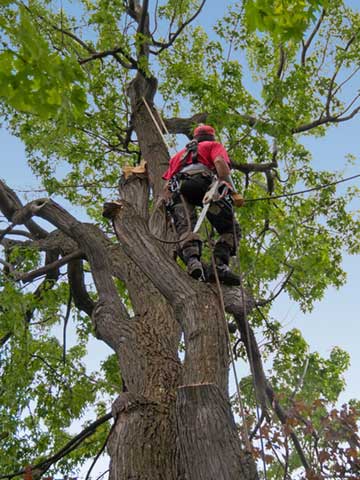
An arborist (sometimes referred to as a tree surgeon) is an expert in trees. The wide variety of types of trees (oaks, pines, maples, elms, palms) with their wide variety of subspecies all have specific requirements and best practices to promote optimal health and growth.
Tree pruning differs between tree species, but is always focused on the health and growth of the tree.
Tree pruning helps strengthen the structure of the tree. It ensures the tree is getting enough light and water. It also involves removing dead, infected, or broken branches - a safety concern that overlaps with tree trimming - but also ensures the tree remains healthy and promotes growth.
Tree pruning usually involves specific tree pruning equipment! Pruning shears and loping shears. Tree pruning frequency will be determined tree by tree based on the type, but is usually done seasonally (along the trees blooming cycle).
Tree Removal
Tree services, especially arborists, would prefer to see your tree flourish, but there are times that a tree must be removed.
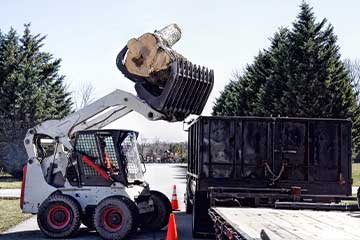
In 2019, the state of Florida passed CS/HB 1159 (Private Property Rights) that prohibits local governments from requiring applications permits, fees, and more for pruning, trimming, and removal of trees on residential property if the property owner obtains specified documentation.
In other words, homeowners can prune, trim, and remove trees from their private property as long as they get the documentation provided by local arborists and landscape architects.
The bill also eliminated the requirement to replant trees - something homeowners might want to consider doing anyway. A tree-less Florida is something none of us should want.
Stump Grinding and Stump Removal
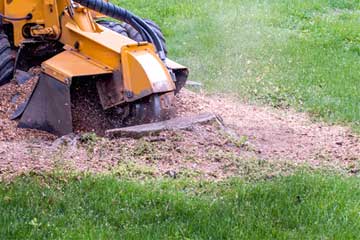
When a tree is removed (by a tree service or severe weather) what do you do with the left over stump? Some homeowners may choose to use the stump as part of their landscape design.
If not, many tree services offer stump removal and stump grinding services. Depending on the type of tree and its root system, stump removal might not be possible. In these cases, stump grinding is the method tree services use to "remove" stumps.
In short, tree removal in Florida requires that the tree pose a risk or hazard, and a state-licensed tree service (arborist or landscape architect) to sign-off on the removal (with proper documentation).
You will need a local, licensed tree service to determine if your tree poses a risk or hazard. While tree trimming may eliminate the risk or hazard without requiring tree removal, there will be cases that tree removal is necessary. Dead or dying trees are a risk or hazard. Trees that cannot withstand the high winds of a hurricane or severe weather are also a risk.



